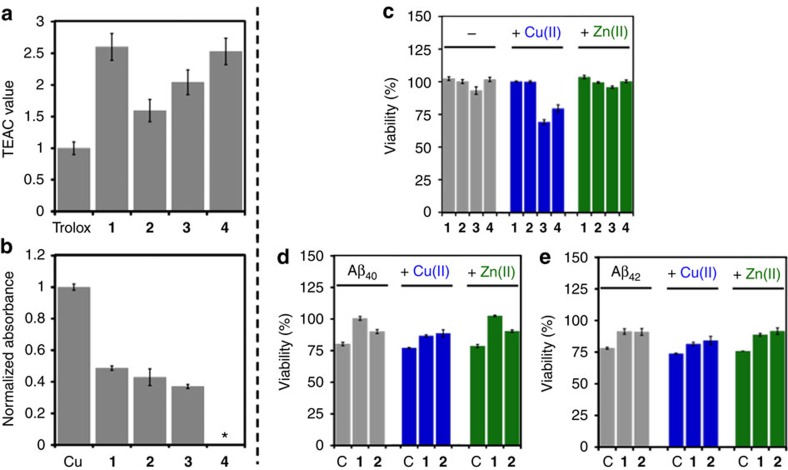Figure 3. Biological activities of 1–4.
(a) Antioxidant activity of 1–4 as evaluated by the Trolox equivalent antioxidant capacity (TEAC) assay employing human neuroblastoma SK-N-BE(2)-M17 (M17) cell lysates. All values are relative to a vitamin E analogue, Trolox (6-hydroxy-2,5,7,8-tetramethylchroman-2-carboxylic acid). (b) Inhibition of Cu(I/II)-triggered Fenton-like ROS production by 1–3 (125 μM) as measured by the 2-deoxyribose assay ([Cu(II)]=10 μM). * 4 was not tested due to limited solubility in the assay buffer. (c) Toxicity of 1–4 (20 μM) to M17 cells with and without metal ions for 24 h. Cytotoxicity data of 1–4 (different concentrations and incubation time points) are presented in Supplementary Fig. 3. (d,e) Ability of 1 and 2 (20 μM) to mediate the toxicity of (d) Aβ40 (20 μM) and (e) Aβ42 (20 μM) in the absence (left, grey) and presence of CuCl2 (middle, blue; 20 μM) or ZnCl2 (right, green; 20 μM) in M17 cells for 24 h. ‘C' indicates the samples untreated with compounds. Viability of cells (%) was calculated relative to that of cells incubated only with 1% v/v DMSO. Error bars represent the standard deviation (s.d.) from three independent experiments (P<0.05).

